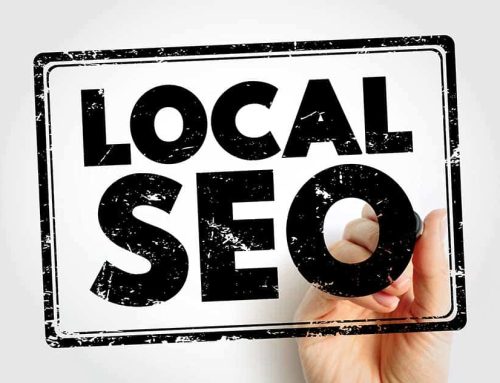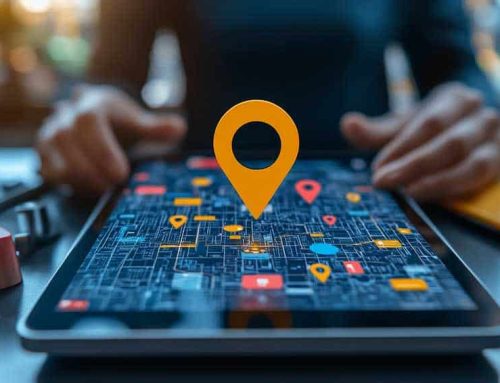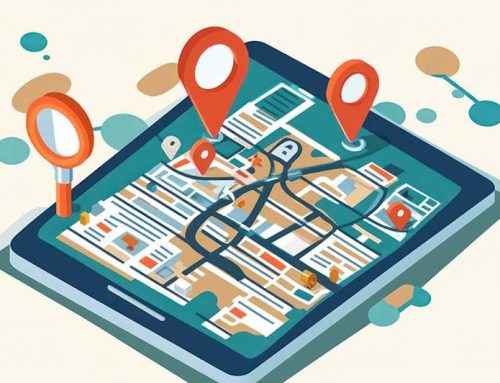Effective Local Marketing Strategies for Small Businesses
In today’s competitive landscape, small businesses can’t afford to overlook the power of local marketing. Whether you run a café, retail shop, or service-based company, connecting with your nearby audience builds trust, loyalty, and long-term support. While digital tools like SEO and social media remain important, the real game-changer lies in how well you engage your local community.
Why Local Marketing Strategies for Small Businesses Matters
Local marketing builds recognition, not just visibility. Customers are more likely to support businesses they feel connected to, especially when those businesses show up at community events, support local causes, and maintain a consistent presence online and offline.
In this blog, we’ll explore practical and effective local marketing strategies for small businesses. From optimizing your Google Business Profile to partnering with neighboring companies, these tips will help you build stronger community ties and drive real growth close to home.
Understand Your Local Audience
Before launching any local marketing campaign, take time to truly understand who lives, works, and shops in your area. Knowing your local audience helps you craft messages that speak directly to their needs, interests, and habits—making your marketing efforts more relevant and effective. Start by looking at demographic data.
What’s the age range of your typical customer? Are they families, students, retirees, or working professionals? Tools like Google Business Profile Insights and Facebook Audience Analytics offer valuable information about who’s engaging with your business online. Local economic development offices and city websites often publish community reports with statistics that can help guide your marketing decisions.
Social media is another excellent source for learning about your audience. Monitor comments, likes, and shares to identify what kinds of content your followers respond to. You can also conduct simple surveys—either in-store or via email—to ask what your customers value most.
For example, a neighborhood bakery might discover that its local audience values organic ingredients and quick service before school drop-offs. Using that insight, the bakery could highlight its organic menu items in early morning promotions and even collaborate with nearby schools for cross-promotion.
Understanding your audience is the foundation for every smart local strategy. When you know who you’re talking to, it’s easier to reach them—online and in person.
Why Local Insights Build Better Campaigns
Understanding your local audience goes beyond knowing basic demographics. Dive deeper into seasonal behavior patterns, lifestyle preferences, and regional challenges your customers face. For instance, a landscaping company in Albuquerque may want to tailor its services to dry-climate lawn care in the spring and water-saving tips in the summer. By connecting your offerings to what matters most locally, your messaging feels more personal and relevant.
Engage your community through informal polls on social media, customer feedback forms, or in-store conversations. The goal is to discover what drives your customers’ decisions—then use that insight to refine your promotions, service offerings, and marketing messages. When you reflect the values and interests of your local market, your marketing becomes a trusted voice, not just another ad.
Optimize for Local SEO
If your business relies on nearby customers, showing up in local search results is essential. Local SEO (Search Engine Optimization) helps your business appear when people search terms like “near me” or include your city or neighborhood in their queries—especially on Google.
Start by claiming and optimizing your Google Business Profile. Make sure your business name, address, phone number (NAP), hours, and services are accurate and up to date. Add high-quality photos and encourage happy customers to leave reviews. These actions help you show up in the Google Local Pack, which highlights top local results on both desktop and mobile search.
Incorporate location-based keywords into your website content, such as your city, neighborhood, or landmarks. Create landing pages that target different service areas, and include frequently asked questions (FAQs) that mention specific local concerns or needs.
Make sure your NAP information is consistent across all online directories—such as Yelp, Bing Places, Apple Maps, and your social media profiles. Inconsistent listings can confuse search engines and hurt your rankings.
Earn local backlinks by getting a feature in local news, blogs, or community websites. These links signal to search engines that your business is relevant and trusted in your area.
Done right, local SEO helps your small business stand out—right when customers are ready to act.
Build Relationships Through Community Involvement
One of the most powerful local marketing strategies for small businesses is getting involved in your community. Showing up—physically and visibly—builds trust, boosts word-of-mouth, and helps customers associate your brand with their day-to-day lives.
Start by participating in or sponsoring local events. Farmers markets, community festivals, charity runs, and school fundraisers offer excellent opportunities to meet potential customers face-to-face. Even small gestures like donating to a local cause or sponsoring a youth sports team can increase brand visibility and goodwill.
Hosting your own workshops or in-store events can be equally effective. Whether it’s a product demo, a free class, or a seasonal pop-up, inviting people into your space helps you build stronger connections and strengthen brand loyalty.
Your involvement also generates free exposure. Local blogs, newspapers, and event listings may cover your involvement, giving you valuable PR without paying for ad space. Sharing your participation on social media—with photos, videos, and event tags—amplifies your reach and reinforces your local presence.
Community involvement isn’t just good for business—it’s good for relationships. It positions your brand as more than just a service provider. It shows you’re an active, invested member of your neighborhood, and that kind of authenticity builds lasting customer loyalty.
Local Media & PR Opportunities
Don’t overlook the power of local news, blogs, and radio stations. Many small business owners assume media coverage is only for big brands, but local outlets are always looking for stories that matter to the community. If you host an event, launch a new product, or support a local cause, reach out with a press release or personalized email. Make it easy for reporters by including photos, quotes, and a clear explanation of why it matters locally.
Additionally, build relationships with local influencers—these could be well-known business owners, active community members, or even school-based organizations with strong followings. A shoutout or collaboration can boost your visibility with a targeted, local audience. Trusted voices in your area build your credibility quickly.

Partner With Other Local Businesses
Small businesses don’t have to grow alone. One of the smartest local marketing strategies is to build partnerships with other nearby businesses that serve a similar audience. These collaborations help both parties increase visibility, share resources, and attract new customers without stretching your marketing budget.
Start by identifying businesses that complement—but don’t compete with—your offerings. For example, a hair salon could team up with a nearby nail spa, or a pet supply store could partner with a local groomer. Think about businesses your ideal customers already visit, and find ways to cross-promote.
Simple tactics can include joint giveaways, where each business contributes a product or service. You can also run bundled promotions, such as “Shop here, save there” discounts. Shared flyers, co-hosted events, or even rotating social media shoutouts can help both businesses tap into each other’s customer base.
These kinds of partnerships not only expand your reach—they also reinforce your presence in the local business community. When local customers see businesses working together, it creates a stronger sense of connection and trust. Plus, shared marketing means shared costs and double the impact.
In a world dominated by large corporations, collaborating with fellow small business owners shows that local loyalty is still a powerful path to growth.
Use Social Media to Highlight Your Local Presence
Social media isn’t just for big brands—it’s one of the most powerful local marketing tactics for small businesses. By showing the people, places, and personality behind your business, you make it easier for local customers to connect with you.
Start by showcasing your real customers, staff, and day-to-day activities. Post behind-the-scenes photos, share customer shoutouts, and highlight community events you’re part of. This kind of content builds trust and makes your brand feel familiar. People are more likely to support businesses they feel connected to.
Use location tags and local hashtags in your posts to help new customers find you. For example, tagging your city or neighborhood and using event-specific hashtags makes your content visible to people nearby. Don’t underestimate the value of geotagging—it helps you show up in local discovery feeds.
Go a step further by creating Instagram Stories or Facebook Lives during community events or store happenings. Short, real-time content keeps your audience engaged and encourages interactions. You can even ask your followers to tag you in their posts and share their photos—turning your customers into advocates.
The key is to be consistent and authentic. When local customers see that you’re active in the community and accessible online, they’re far more likely to walk through your door.
Local Social Media Campaign Ideas That Work
To really maximize your presence on social media platforms, go beyond simply sharing updates. Create interactive campaigns that invite participation from your local audience. For example, run a “Local Business Highlight of the Month” series, where you tag and promote another small business in your area. Not only does this help build your network, but it also encourages cross-promotion and word-of-mouth exposure.
Another idea: launch a community photo contest related to your business. A pet groomer might ask followers to share their best before-and-after pet photos. A bakery could invite locals to post their favorite treats with a branded hashtag. Winners can receive small prizes like discounts or featured posts.
These contests create buzz, increase visibility in local search, and often result in highly shareable user-generated content.
Also, use location stickers and geotags in your stories and posts to boost local discoverability. Instagram and Facebook algorithms boost content when you regularly tag your city, neighborhood, or nearby landmarks. Showcasing your real environment—staff, customers, or community happenings—helps followers feel a genuine connection to your brand.
Turn Customer Experiences Into Local Marketing Gold
Word of mouth has always been a powerful tool for local business growth—but in 2025, it’s not just about neighbors chatting. Positive customer experiences, when shared publicly, can become one of your most effective and affordable marketing strategies.
Encourage happy customers to leave online reviews on platforms like Google, Yelp, or Facebook. These reviews influence local search rankings and build trust with new potential clients. Don’t be shy about asking for reviews—send a follow-up email after a purchase or include a QR code at checkout that links directly to your review page.
Even more powerful than written reviews? Real stories.
Turn customer testimonials into short videos or social media spotlights. Capture a few lines about what problem you solved, how you delivered value, or why they keep coming back. Authentic storytelling creates emotional connection—and it feels more trustworthy than polished advertising.
You can also build local credibility by showcasing user-generated content. If a customer posts a photo using your product or visiting your store, ask for permission to share it. Highlighting real people in your marketing shows that your brand is active and appreciated in the community.
By turning excellent service into visible proof of value, you not only retain loyal customers—you also attract new ones. It’s free, it’s effective, and it helps your small business stand out in a crowded local market.
Make Local Marketing Your Competitive Edge
Strong local marketing strategies for small businesses don’t require massive budgets—they require clarity, consistency, and community connection. Whether you’re optimizing your Google Business Profile, partnering with a nearby business, or showing up at local events, every action you take to strengthen your local presence builds long-term brand loyalty.
The businesses that stand out in 2025 will be the ones that invest in their neighborhoods and show up where their customers are—both online and offline. When you root your efforts in genuine connection, you strengthen results across social media and community sponsorships.
If you’re ready to create a local marketing strategy that fits your goals, your voice, and your budget, our team is here to help.
Contact Design It Right today and let’s build a custom plan that puts your business on the local map—where it belongs.




